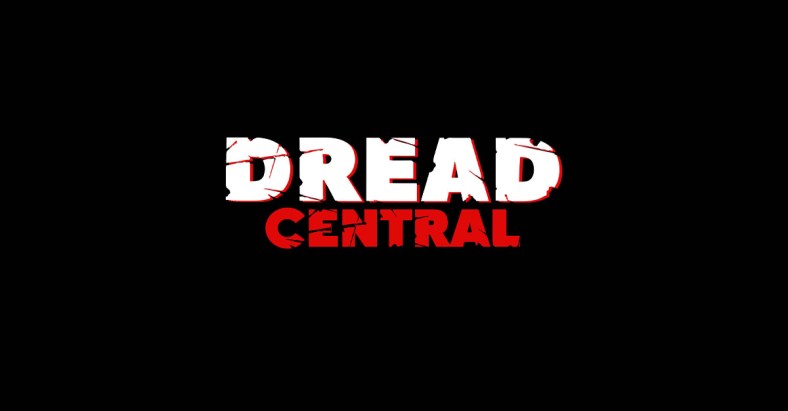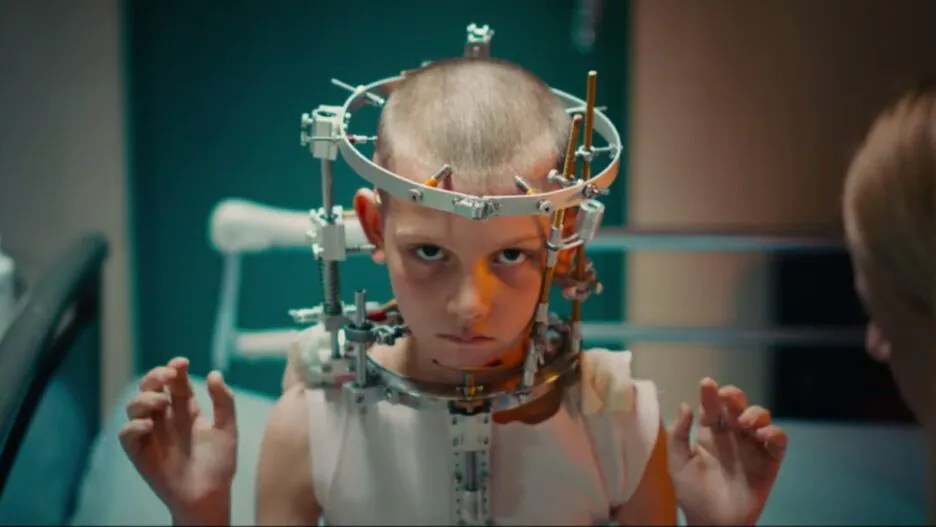Body Horror and Growing Up Trans

When I was 17, I had to give a nearly hour-long presentation about an artist of my choosing in my high school’s Art History class. While other kids presented icons like Van Gogh and Dali, I tortured everyone with giant projections of feverish landscapes featuring melted fetuses and bone-like metal towers, portraits of demonic bio-mech creatures whose bodies contained both penises and vaginas, rounding out with clips of the iconic horror movie Alien. My in-class activity involved having two friends hold body pillows on either side of the door, forming a recognizable vulva shape, and making students—and the teacher—walk through as my friends ‘contracted’ around their entrance. I was that kid.
I was, of course, presenting H.R. Giger, whose surreal and nightmarish artwork is most well known as the Oscar-winning design of the movie monster xenomorph. I’ve had a lifelong obsession with both the xenomorph, as well as Giger. My parents liked to say it began while I was in utero, when they went to a showing of the sequel Aliens and (supposedly) I kicked; in my teens, while other girls put up posters of NSync, I had pages of my Giger calendar taped to my wall; when I was old enough, I got a xenomorph tattoo that peeks out at you over my shoulder if I wear the right top. But it wasn’t until after I recognized myself as being transgender that I fully understood what the obsession was really all about.
As I grew into adolescence, I found myself gravitating towards movies that all shared a certain thematic element, what I came to learn as ‘body horror.’ A lot of media falling into that category can be very narratively varied, but their commonality is always around a human whose anatomy starts changing against their will, usually in grotesque and horrific ways. Of particular obsessive interest to me was Cronenberg’s The Fly, the Borg in Star Trek: The Next Generation TNG, and even the Phalanx in the X-Men comics.
To me, there was something beyond just the terror I was witnessing, there was a fascination, a strange pluck of recognition. Jeff Goldblum’s slow transformation into an unrecognizable mutation of himself, Rogue being turned into fleshy-circuit boards, or Picard being mutilated in order to turn his body into a vessel for further reproduction of a virulent race; these all absolutely wrecked me as a child, but I couldn’t stop poking that sore tooth. Because there, right inside me, things were happening during puberty that I couldn’t control and couldn’t stop, much less even understand, and I had no space to even explore the why of it all. It drove me so crazy that I wound up attempting suicide.
With this quiet devastation now a staple of my life, I gravitated even harder into body horror, hungry for stories where I could witness someone going through what felt like my experience, whether or not I fully recognized the whole reason why at the time. One of the more extreme examples I found was Shinya Tsukamoto’s Tetsuo the Iron Man, which even deals directly with how your genitals become terrifying (even though that movie does it in a horrifically misogynistic way). That movie hit like a hammer to the face, the body transformations disturbing and nauseating. All I could do was keep staring and going “yes, kinda like that.”
I’m not being profound or original when I say that body horror is something Trans people will forever know better than cis people, even when we don’t have the language to articulate why. “Puberty sucks for everyone,” sure, yes. But for a Trans person, it can be a daily, almost hourly misery; your body stops being your own, actively betraying you. It’s almost like a splitting. There’s now the you that you are, and the you that’s being seen by the world, the sight of which can be enough to ruin your mental health and could result in self-harm.
Obviously I cannot overstate the necessity for free and easily accessible transition-related healthcare. The example I always like to give is if a cis boy started growing breasts one day, there would be literally zero question or obstacle to getting him immediate care; Trans kids basically get condescension and dismissals: ‘it’s just a phase’ or ‘deal with it.’ While I may not have sprouted any mechanical appendages or grown extra mouths, my body felt painful until I was able to transition.
Cis people, predominantly cis men, make these movies because I imagine to some degree for them there is no greater threat than your body working directly against you, making you into something monstrous. The thought of losing agency over your fragile meat vessel is enough to send shivers down your spine. There is also the politics of the body horror movie, which is a long-held patriarchal version of morality that carries us right up to today with the passing of violently transphobic laws and the repeating of nonsensical violent transphobia by celebrities with giant platforms: your deviation from the binary, from your conditioned usefulness, makes you into something to be feared, a villainous beast. This gives me, and other Trans people, extra layers of understanding. The ‘monstrosity’ is being defined by the larger cultural system of acceptance, ‘beauty,’ and ultimately the ability for labor and reproduction.
Various cultural mythologies birthed body horror, monstrous transformations for those deemed deviant. The older I got, the more I found kinship with a few of the Greek myths. Before my idolizing of the xenomorph, Medusa was an early love (thanks to Ray Harryhausen and Clash of the Titans). Her change is even more terrifying because it’s her ‘punishment’ for being raped (the messaging here loud and clear for anyone living in the world as a woman).
Ovid’s version of Scylla similarly places lifelong burden on a woman who went outside of her expected role, her lower half transforming into vicious dog heads. Body horror posits anything that isn’t fitting a very specific (cis, able-bodied, reproductive) body type as ‘bad;’ I, and other Trans people, can perhaps resonate with what’s happening to those characters whose bodies metamorphose to their sheer horror. But in these narratives, these are now bodies that must be destroyed in order to return to a more ‘normal’ state, and do their part to reinforce a conservative viewpoint of a binary (which, writing that out, sounds a lot like what the GOP and TERFs would love to do).
This is, in effect, what can lead to identification with the monster, with the ‘villain’. Queer people of every kind are no strangers to that idea. For me, my body was changing in ways I fantasized violently ending, and yet now happily and healthily in transition, all I have to do is log onto the news or social media to face a daily onslaught of people trying to convince me I’m the degenerate, the terrifying monster here to infect and corrupt others. (Trans people are currently in the crosshairs. But this is a conspiracy of hate that’s been used against different marginalized people for decades in order to drum up cultural hysteria for political power and white supremacist ideology. The lack of self-awareness would be comical if it weren’t so dangerous).
It wasn’t until a very divisive movie out of France last year that we saw something inverting this paradigm. While not directly a Trans movie, Titane hit me in a way no other body horror had before (or really any movie in general). That’s because there is so much of the Trans experience not only within the ‘horror’ element, but within its flip of common Trans stereotypes in movies. Here, we see a character’s unwanted transformation met not only with compassion and love, but their own denouement is in discovering authenticity within it. The more of a monster they become, the more of their humanity and ability to connect to others they find.

Director Julia Ducournau seems to understand and present in her film both the idea that “deviant” bodies (and directly, Trans bodies) are not horrific, but actually the gateway to anyone learning to understand their body, and what it means to exist inside of one. Ducournau, by her own words, views monstrosity as a good thing, regardless of where you may lie in the gender spectrum.
Recently, my best friend and I went to see the small H.R. Giger exhibit here in New York. We fell into a discussion about how as closeted trans kids, we developed fixations on all these things others found terrifying, and how that has carried through into adulthood. It began with having an adoration for a monster like the xenomorph, which was the gateway into Giger’s world of surrealistically fluid bodies composed of flesh and metal, organic meshed with inorganic, and hefty doses of gender-fuckery. There were recognizable forms, but it was all blended and bent against any kind of expectation and preconceived notion, because in Giger’s landscapes and creature designs, there wasn’t a set definition of what a body was; there was no normal, because to him, bodies weren’t normal to begin with.
In fact, their abnormality—taken to arguably freakish extreme in his work—is what gave them a sense of beauty. Giger blends phallic and yonic imagery (even the design of the xenomorph head features both), and it’s what makes them powerful; a lot of times, his creations are even in a kind of ecstasy, celebrating themselves. For him, as with Ducournau, the body is as fluid as the imagination. There is no ‘normal’ ideal of a body; there is only what new and undefined beauty can be found outside of the limits of any sort of boundary. And there is nothing more Trans than that.
Categorized:Editorials News

